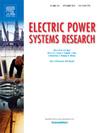Impedance modeling analysis and variable transient virtual impedance control of virtual synchronous generators under external disturbances in microgrids
IF 3.3
3区 工程技术
Q2 ENGINEERING, ELECTRICAL & ELECTRONIC
引用次数: 0
Abstract
Due to the continuous expansion of the application scope of virtual synchronous generator (VSG) technology in microgrids and renewable energy generation, grid-connected converters need to address the impact of different external disturbances on stability and performance. This article uses the impedance modeling method to establish a VSG impedance model considering both DC voltage and microgrid frequency fluctuations. Propose variable transient virtual impedance control (VT-VIC) to get rid of the effect that changes in DC voltage and microgrid frequency have on VSG performance and stability. Simultaneously, impedance analysis of VT-VIC and Active Damping Control (ADC) under different operating conditions was conducted using the established VSG impedance model. Through experimental verification, the proposed variable transient virtual impedance control (VT-VIC) performs better than active damping control (ADC) under external disturbances. Finally, analyze the experimental results and draw conclusions.
求助全文
约1分钟内获得全文
求助全文
来源期刊

Electric Power Systems Research
工程技术-工程:电子与电气
CiteScore
7.50
自引率
17.90%
发文量
963
审稿时长
3.8 months
期刊介绍:
Electric Power Systems Research is an international medium for the publication of original papers concerned with the generation, transmission, distribution and utilization of electrical energy. The journal aims at presenting important results of work in this field, whether in the form of applied research, development of new procedures or components, orginal application of existing knowledge or new designapproaches. The scope of Electric Power Systems Research is broad, encompassing all aspects of electric power systems. The following list of topics is not intended to be exhaustive, but rather to indicate topics that fall within the journal purview.
• Generation techniques ranging from advances in conventional electromechanical methods, through nuclear power generation, to renewable energy generation.
• Transmission, spanning the broad area from UHV (ac and dc) to network operation and protection, line routing and design.
• Substation work: equipment design, protection and control systems.
• Distribution techniques, equipment development, and smart grids.
• The utilization area from energy efficiency to distributed load levelling techniques.
• Systems studies including control techniques, planning, optimization methods, stability, security assessment and insulation coordination.
 求助内容:
求助内容: 应助结果提醒方式:
应助结果提醒方式:


